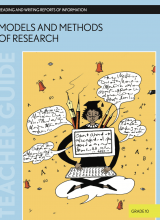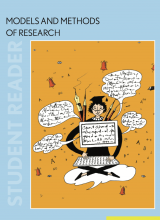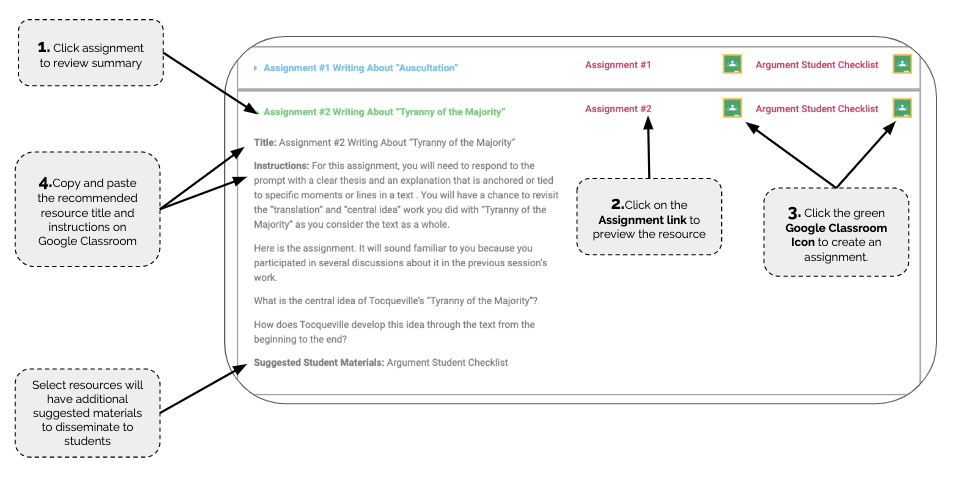Models and Methods of Research - Grade 10
The unit has two parts. In Part 1, students will study Clancy’s chapters by moving through a basic progression of comprehension work followed by interpretive work. In other words, students’ early work with Clancy is dedicated to making sense of the chapters; the later assignments in Part 1 build on those comprehension tasks and ask students to develop insightful interpretations of Clancy’s work. The work in Part 1 scaffolds the work of Part 2 where students take on a research-based report writing project of their own. Towards the end of the unit, student reports are compiled, distributed, and studied as additional examples of research-based report writing. Teachers have the option of continuing with sessions focused on developing research-based presentations.


Table of Contents
Writing Tasks
Title: Tracking Abducted
Teacher Manual Instructions:
Point out to the class that this tracking form is designed to help students monitor, record, and make sense of the chapter.
Review the tracking form with the class and explain that the work of the next few sessions will be set aside so that students can complete this task.
In an effort to model smart approaches to the work of this part of the unit, you might decide to show students a way to mark, as they are reading, passages in the text that feature key people or that contain significant moments.
Negotiate with the class a way to read through the chapters. You might, for example, read the first pages aloud and then have students read the rest of the text silently. Or, you might decide to read the entire “Introduction” aloud and then, later, negotiate a way to read through the other chapter (for example by reading the first few pages aloud and then having students read the rest of the text silently). In any case, students should add notes to the tracking sheet as they read.
Title: Reading and Writing About Abducted The First Assignment
Teacher Manual Instructions:
Session 4
Answer any questions students have about the assignment or the work to be done. Point out to students that this work is, to a degree, “writing-to- think” work, and while students should work deliberately and carefully on it, it is also a place to record questions and uncertainties about the text. If necessary, consider borrowing a student’s tracking notes to model how a student might consult their notes, the text, and their annotations to get started with this work.
Title: Reading and Writing About Abducted The Second Assignment
Teacher Manual Instructions:
Session 6
Review the assignment with the class. Point out to students that Clancy’s text is doing two things at the same time: on one level, it seems as though it is simply informing the reader about people’s experiences and beliefs. On a second level, though, Clancy is also making arguments in the text, connecting facts and ideas to claims, some of which are directly stated and some of which are im- plied. This task is focused on uncovering and clarifying the arguments Clancy is making in her text.
Title: Reading and Writing About Abducted The Third Assignment
Teacher Manual Instructions:
Session 9
Review the assignment with the class. Make clear to students that they probably already have a very good understanding of the text itself, so the point of this work is to look closely at the structure and methods of this kind of writing. Clancy’s text will serve as an exemplar for the writing students will be doing in the next part of this unit.
Tell students that you will lead them through the “methods” work with the “Introduction” and that this guided practice will prepare them take on the work with the second chapter with more confidence.
Title: Reading and Writing About Abducted Recapping the Work
Teacher Manual Instructions:
Session 11
Working in pairs, students should begin the tasks set out in this assignment. Remind students that they will have the work period of this session and the next to complete the assignment.
As they work, remind students that this assignment is basically asking them to summarize and distill work they have already done. Students should draw heavily from the work they completed during previous assignments in this unit.
Title: The Research-Based Report Writing Project
Teacher Manual Instructions:
Session 13
Review the assignment with the class and answer any questions students might have about it.
Tell the class that the remainder of this extended session will be devoted to brainstorming (first in pairs and then as a whole group) lists of specific “ways” or “roles” students can study.
Title: Sub-Assignment #1 Identifying a Research Topic
Teacher Manual Instructions:
Session 14
Review “Sub-Assignment #1” with the class.
Direct the class’s attention back to the display copy of your work where you identified your research topic and question(s) and explained what you were going to study. Tell students that this example should serve as a model for their own work on “Sub-Assignment #1.” In other words, their quick write for this sub-assignment should resemble yours. It is also worth asking students to recall the questions they identified in Clancy’s writing; these questions helped guide her work in the same way that students’ questions will guide their research. Good questions lead to interesting writing—and make the process itself more enjoyable.
Title: Sub-Assignment #2 What You Expect to Learn
Teacher Manual Instructions:
Session 15
Review “Sub-Assignment #2” with the class.
Return, once again, to the display copy of your own quick write and point
out the places where you answered the two questions in “Sub-Assignment #2.” Remind students that this example should serve as a model for their own work on this task.
Title: A “Before You Begin Writing” Task Wrapping Up the Research
Teacher Manual Instructions:
Session 23
Title: Sub-Assignment #3 What Did You Learn From Your Interviews?
Teacher Manual Instructions:
Session 24
Review the assignment with the class.
Direct the class’s attention back to your own quick writes in response to this sub-assignment, using your work as examples to help clarify the task.
Answer any questions students have about the work. Emphasize that information from interviews and research should help shape our views of our subject— we aren’t researching simply to confirm what we already know and believe, but to learn about and explore our topic. This task and the following one allow us to reflect on what the new information has shown us.
Title: Sub-Assignment #4 What Did You Learn From the Books and Articles You Read?
Teacher Manual Instructions:
Session 25
Title: Sub-Assignment #5 Writing the Report
Teacher Manual Instructions:
Session 26
Charts for Discussion
Title: Class Retelling of Abducted
Teacher Manual Instructions:
Session 5
Title: Ways to Incorporate Interviews into a Report
Teacher Manual Instructions:
Session 16
Reread these sections to the class, pointing out the different ways and different places that Tobar used interview data. Create titles for each of these uses and list them on a chart titled “Ways to Incorporate Interviews into a Report.”
Title: Citations
Teacher Manual Instructions:
Session 22
Distribute a style manual to each student in the class and allow a few minutes for them to thumb through the text (or, alternately, direct students to the Purdue OWL website).
Explain to the class that, in addition to providing information on grammar and punctuation, style manuals also supply writers with helpful information related to research-based writing.
Ask the class to turn to the “Brief Contents” section of Hacker’s A Pocket Style Manual and to briefly skim over the items listed under the following sections: “Research,” “MLA Papers,” “APA Papers,” and “Chicago Papers.” On the Purdue OWL website, this is found under “Research and Citation Resources.”
Write on the board the name of the particular citation type students are expected to use in your classroom. Tell students that they should ignore the sections covering other citation types.
Have students take a minute to look over the contents of the citation section they need to learn. Ask them to make a few notes about its contents and its organization.
Afterwards, ask students to share what they found with the class. List their findings on a chart titled “Citations.”
Checks for Understanding
Title: Questions about Abducted
Teacher Manual Instructions:
Session 4
Ask students to take a minute to add any additional notes. Remind them to add page numbers of moments they described if they have not done so already.
Remind students that they will have the first part of the next session to wrap up their retellings.
Remind students that their quick writes will be the basis for the whole-class reconstruction work at the end of the upcoming session.
Consider beginning a “Questions about Abducted” chart to allow students to chart some of their big questions about the text. This chart provides a central place to capture these ideas without needing to discuss them at the time they are recorded—they can be returned to during whole-class discussions.
Title: Clancy’s Arguments
Teacher Manual Instructions:
Session 6
Briefly reconvene the class and invite volunteers to share a few of the arguments they see Clancy making.
Resist the urge to discuss these arguments at this time. Instead, view this as an opportunity to share some examples of arguments that will help the rest of the class obtain a clearer idea of what an argument can look like in the text. Capture these arguments in the form of brief statements on a chart titled “Clancy’s Arguments.”
Allow students to add to the “Questions About Abducted” chart if necessary. Return to student questions as appropriate in Session 8.
Title: Structure of the “Introduction”
Teacher Manual Instructions:
Session 9
When students think they have identified all the transitions in the “Introduction,” move on to complete the second step on the assignment sheet. Negotiate the titles (and supporting notes) with the class. When there seems to be consensus among the group, jot the paragraph numbers, title, and notes on a chart titled “Structure of the ‘Introduction.’” (In cases where consensus is hard to come by, don’t hesitate to build two or more charts so that competing readings also receive representation.)
Title: Short Assignments for Research Project
Teacher Manual Instructions:
Session 16
Reconvene the class and ask volunteers to share the short assignment items they have on their lists.
Capture these on a chart titled “Short Assignments for Research Project.” The goal here is to generate a long list of short assignments. This “master” list will be important as a repository of assignment ideas that students can consult as they map out the work ahead.
Ask students to review their own list of short assignments after several people have shared theirs: What new ideas do they have after listening to each other? What other tasks, assignments, or areas of investigation do they want to add to their lists? Give students a moment to revise their plans.
Title: Things to Work On
Teacher Manual Instructions:
Session 16
Ask volunteers to share the items on their short assignments lists that they completed during the work period. (Add any new items identified to the master “Short Assignments for the Research Project” chart created during Session 16.)
Create a new, two-columned chart titled “Things to Work On.” Use one column to list any problems that arose during the work period and use the other to list possible solutions. Students should play an active role in identifying problems and brainstorming solutions.
Give students a few minutes to review their short assignments lists so that they can decide what homework, if any, they might have this evening. In other words, they should ask themselves the following question: “What do I need to do tonight so that I can accomplish what I need to in class tomorrow?”
Independent Reading
Title: Book Interview
Instructions:
Display a copy of the “Book Interview” sheet for the class to see and distribute copies to students.
Using one of the books from the classroom library, model for students how to interview a book and how to fill out the sheet. Answer any questions students have about the form and its terminology.
Give students time to interview three books and to enter their findings on the “Book Interview” sheet.
Title: Book Pass
Instructions:
Organize students’ desks into a circle (or, if this is not possible, determine a very clear path for books to pass through the group).
Explain the purpose of a book pass:
A book pass is another way to expose students to the texts available in the classroom library. A book pass requires students to use their book interviewing skills. A book pass is a chance for students to find titles to add to their “Books I’d Like to Read” list.
Display a copy of the “Book Pass” for the class to see and pass out copies to students.
Demonstrate for the class how a person goes about making an entry on the form. Since students will need to write quickly, show how an author can be listed just by last name and first initial, and demonstrate how a student can abbreviate a long title if necessary. What matters is that they have enough information to track down the book again later if they need to.
Give each student one book (or magazine). Tell them it doesn’t matter which text they start with, because they will see all—or at least many of—the books. (Be sure you have one title for each student in the circle.)
Choose a direction for passing.
After students receive a book, they should immediately record the author’s name (if the text is a book) and title on the “Book Pass” form.
Give students one minute to interview each book following the procedure established in the previous session.
At the end of one minute, call “pass.” At this time, students should make an entry in the comments column and pass the book to the next student.
Continue the book pass until each student has interviewed all the books.
Title: Book Recommendation
Instructions:
Distribute copies of the “Book Recommendation” form to students and give them time to craft or begin crafting their first review. Students can choose to write about a book they’ve completed recently or one they remember well from past reading.
Title: Goals for My Reading Life
Instructions:
Display a copy of “Goals for My Reading Life” for the class to see and distribute copies to students.
Use this time to review how to fill out the goals sheet. Be sure to show students how they can use the charts to generate ideas for answers to the “Goals” questions.
Take a moment to stress the value and function of the “Books I’d Like to Read” list. Point out that this list is a tool that serves the same function as a bedside table for some readers: It is a place to store up titles or books that are “next in line.” Remind the class that readers constantly have their eyes open for “next” texts. A “Books I’d Like to Read List” is a way to prevent aimless and unproductive castings around for new reading materials. It’s a planning tool.
Explain that at the beginning of each marking period, each student will fill out a new goals sheet; at at the end of each marking period, students will take a few minutes to review their goals statements and reflect on their efforts to meet them.
Answer any questions students have about the “Goals for My Reading Life” forms.
Give students time to complete the form and set a deadline for submission. You may decide to photocopy these to keep a set for yourself. Return the forms to students during the next session and have them attach the form to a page in their notebook or save it for their student portfolio (see Creating a Student Portfolio).
Title: Reading Log
Teacher Manual Instructions:
Show students how to set up a “Reading Log” in their notebook. They should be sure to enter it in their table of contents. You may decide to distribute sticky notes so that students can flag this page. Use the model on the next page to guide your efforts.
Notice the column titled “Date Completed/# of Pages Read.” This column is a place for students to record, and receive credit for, the reading of texts that did not require a “cover-to-cover” experience. Be sure to point out that reading sections of several texts for specific purposes is not the same as skipping aimlessly from book to book to book. The former often indicates purposefulness and interest; the latter can indicate confusion or disengagement.
After students have set up the reading log—including proper headings, creating the grid, etc.—demonstrate how to make an entry.
Answer any questions students have about the log.
Remind students that the reading log is a tool to be used in conjunction with the “Goals” sheets. Students track their reading in the log and then use the log to evaluate their progress toward their goals.
If you plan to use student portfolios this year, consider introducing them at this time using some version of the information in the section that follows. Review Creating a Student Portfolio in advance to be sure you have thought through some of the important questions for portfolio work.
Unit Resources
Title: Reading and Writing About Abducted: The First Assignment
Title: Reading and Writing About Abducted: The Second Assignment
Title: Reading and Writing About Abducted: The Third Assignment
Title: Reading and Writing About Abducted: Recapping the Work
Title: Sub-Assignment #1: Identifying a Research Topic
Title: Internet-Based Resources: The Scholarly Article
Title: Library Resources: Searching For, and Within, Books
Title: A “Before You Begin Writing” Task: Wrapping Up the Research
Title: Sub-Assignment #3: What Did You Learn From Your Interviews?
Title: Sub-Assignment #4: What Did You Learn From the Books and Articles You Read?
Title: Grades 9 and 10 – Interpretive_Argument Rubric
Title: Grades 9 and 10 – Informational_Explanatory Rubric
Title: Scaffolds and Modifications: Descriptions and Use
